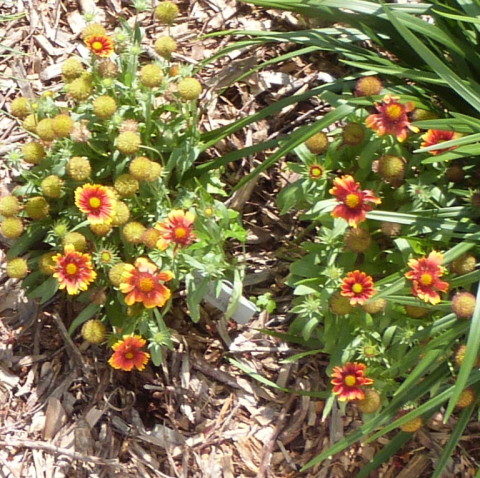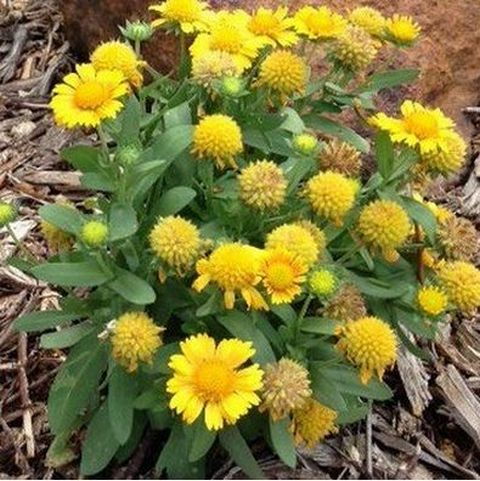
|

|
| Common Name: Type: Family: Native Range: Zone: Height: Spread: Sun: Water: Maintenance: Suggested Use: Flower: Attracts: Tolerate: Bloom Time: Bloom Description: |
blanket flower Herbaceous perennial Asteraceae Garden origin 3 to 10 2.00 to 3.00 feet 1.00 to 2.00 feet Full sun Dry to medium Low Annual, Naturalize Showy Birds, Butterflies Rabbit, Drought, Dry Soil June to September Yellow, orange, red with maroon to orange banding at petal bases |
Short-lived perennial that is winter hardy to USDA Zones 3-10. Easily grown in average, medium, well-drained soils in full sun. Prefers moist, organically rich soils that drain well but tolerates some dry soils. Performs poorly in unamended heavy clay Missouri soils, however. Many hybrid cultivars may be grown from seed. For those that can, sow seed directly in the garden after last frost date or start seed indoors 4-6 weeks earlier. Set seedlings out after last frost date. Space plants 12-18” apart depending on size. Deadheading spent flowers is not necessary but will tidy the planting and may encourage additional bloom. If flowering declines in summer, consider cutting back plants to encourage a fall bloom. Seed strains will self-seed in optimum growing conditions if flowers are not deadheaded. This short-lived perennial gaillardia is a tetraploid hybrid resulting from a cross between a 3’ tall perennial gaillardia (G. aristata) and a 2’ tall annual gaillardia (G. pulchella). It arguably inherited its perennial habit from the former and its long flowering period and rapid growth rate from the latter. Typically grows 2-3’ tall on upright stems that are mostly leafless at the top. Features daisy-like flowers (3-4” diameter) in a wide variety of color arrangements, but usually featuring yellow to orange to red rays with maroon to orange banding at the petal bases and dark burgundy center disks. Double-flowered forms and dwarf selections are also available. Blooms late spring to fall. Lance-shaped gray-green leaves (to 3-6” long). Flowers are attractive to butterflies. In areas where goldfinches are present, gardeners should consider leaving some spent flowerheads for the birds. Gaillardia is sometimes commonly called blanket flower in probable reference to the resemblance of its rich and warm flower colors and patterns to blankets woven by Native Americans. However, some authorities suggest that the name blanket flower was originally in reference to the habit of wild species plants to form colonies which blanketed the ground. |
| Information on this page is from Missouri Botanical Gardens, Dave’s Garden, All things Plants, Texas Superstar or Aggie Horticulture |
This page last updated or reviewed [220722]
